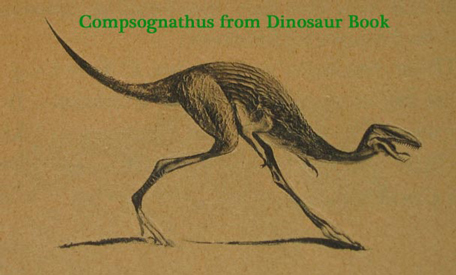Calling Calamosaurus! An Amazing Fossil Discovery
Isle of Wight Fossil Find – British Compsognathidae?
It may not look like much, it is a dinosaur fossil but highly eroded and with a great deal of the original bone material missing but this could just be one of the most important fossil finds on the Isle of Wight for a decade. Amateur fossil collector Dave Badman found the 4 cm long dinosaur bone at Chilton Chine. It has been identified as a neck bone (cervical vertebrae) from a small meat-eating dinosaur, that roamed the area that was to become the Isle of Wight around 130 million years ago. This is the first fossil find associated with this species for nearly 140 years.
Calling Calamosaurus
Calling Calamosaurus – Significant Fossil Find
Picture vredit: Isle of Wight Council
The photograph above shows the fossil being held in David’s hand, this provides a “handy” scale, like we stated earlier, it may not look like much but this fossil discovery could prove to be very significant.
What’s All the Fuss?
Whizz back in time to 1882 or thereabouts, two articulated cervical vertebrae were purchased by the then British Museum (now the Natural History Museum, London). These bones were part of a collection being sold by the estate of the Reverend William Fox (1813-1881) who had been an avid collector of vertebrate fossils on the Isle of Wight, whilst the curate of Brighstone Church. These two bones were stored with fossils of turtles but the “Keeper of the Fossils” at the British Museum, Richard Lydekker, noticed how similar these bones were to that of a dinosaur – Coelurus, a small theropod.
Lydekker erected the genus Calamospondylus in 1889, however, this had to be changed two years later to Calamosaurus as the name Calamospondylus had already been used back in 1866 to name another theropod dinosaur from the Isle of Wight. The way these neck bones fitted together suggested that the dinosaur had a curved neck, their size indicated that the dinosaur was relatively small, no more than three metres in length. It was postulated that this was further evidence that compsognathids roamed what was to become the British Isles.
The Compsognathidae
Dinosaurs of the Family Compsognathidae are small, some of the smallest dinosaurs known. They were fast-running, long-necked hunters with light bodies, small heads, graceful legs and lengthy tails.
An Illustration of a Typical Compsognathid Dinosaur
No other fossils related to this genus had been found since, that was until sharp-eyed Dave spotted one on a beach at Chilton Chine.
Mr Badman’s discovery helps to reaffirm the belief that the original two fossils were from the Wealden Group Beds exposed at the coast just a few miles from the village of Brighstone, where the Reverend Fox lived.
Everything Dinosaur Comments
A spokesperson from Everything Dinosaur commented:
“The Reverend Fox was an amateur fossil collector so it is very appropriate for another amateur fossil collector to find the next material to be associated with this elusive dinosaur. Although, very little is known about Calamosaurus (C. foxii), there were probably a number of small theropods, scurrying around the undergrowth in this part of the world during the Early Cretaceous. Perhaps more fossil material will come to light, hopefully we won’t have to wait another 140 years or so before it does.”
The fossil has been donated to the Dinosaur Isle Museum.
Councillor Shirley Smart, (Executive Member for Economy and Tourism) on the island stated:
“This find has once again shown the Isle of Wight is one of the world’s best sites for dinosaur fossil discoveries and there is a real community spirit. I want to thank Dave for bringing the specimen to the museum and allowing it to go on display so that it can be enjoyed by visitors for years to come.”



